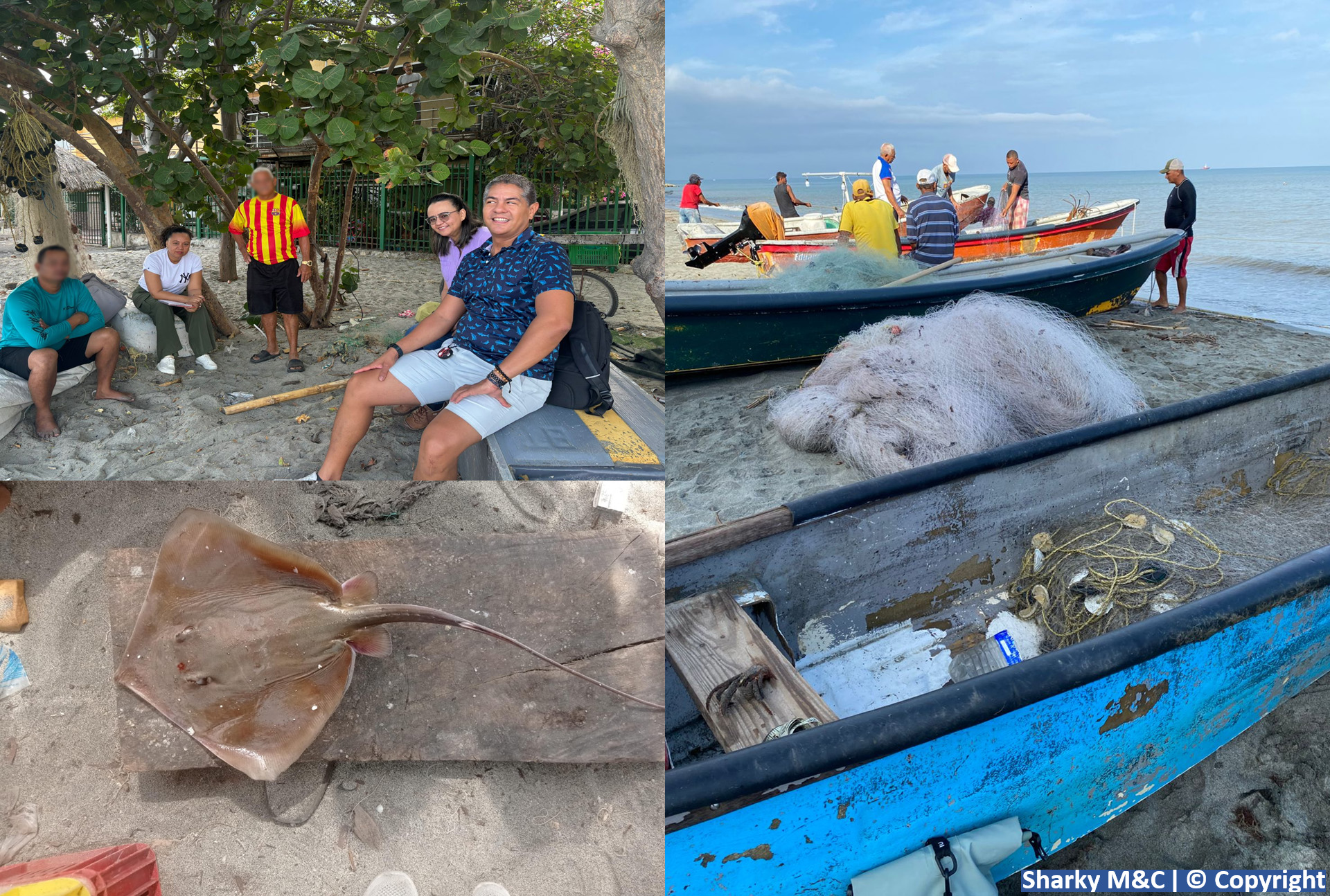On the Trail of Rays in the Colombian Caribbean
In the warm, vibrant waters of the Colombian Caribbean, where fishing isn’t just a job it’s a way of life, something pretty awesome is happening. A passionate team is out there, working quietly but steadily to protect one of the ocean’s most mysterious and overlooked creatures: rays. They might not get the spotlight like sharks or turtles, but rays play a huge role in keeping marine ecosystems healthy. And when they get caught as a target or by accident — it can have serious consequences.
Since April 2025, Carlos Polo, through Sharky Management and Consulting and with support from the Save Our Seas Foundation, has launched an ambitious project to uncover what’s really going on. Which rays are getting caught? Where? How? And most importantly why? The big goal? Cut down on bycatch and promote fishing practices that are better for the ocean and for the people who depend on it. And that means working side by side with local fishers, the real experts when it comes to life at sea.
The journey started in four fishing communities in the Magdalena region: Don Jaca, Pueblo Viejo, Tasajera, and Playa Salguero. Sharky’s team showed up not just to talk, but to listen. They met with local leaders, shared the project’s vision, and earned the trust needed to start real, hands-on work. That meant hanging out at the docks, chatting with fishers, and collecting info right where the action happens.
Since then, the effort has been ongoing. With the support of interns and thesis students from the Jorge Tadeo Lozano University, over 60 monitoring visits have been conducted so far. At every single one, they’re logging key info: what species are being landed, their size and weight, what gear was used, and where the catch happened. So far, they’ve recorded 79 rays, mostly Longnose stingray (Hypanus guttatus), along with a few Atlantic Chupare (Styracura schmardae) and even some accidental catches like the crucifix sea catfish (Sciades proops).
But here’s the real heart of the story: the people. In some communities, there has been remarkable openness, allowing the team to handle the species and take accurate measurements. In others, where initial resistance was greater, we’ve noticed encouraging progress. With patience and dialogue, communities have begun to understand that this effort is not about enforcement, but about learning and conservation.

Sights from the monitoring visits conducted with local fishers and communities. Photos © Carlos Polo
All the data being gathered is going into a growing database that’s helping the team spot trends, gaps, and ways to improve their work. And on every field trip, Sharky’s team also talks with fishers about why it matters to protect baby rays and breeding females. Changing habits is tough but every ‘convo’ plants a seed. Real change takes time, trust, and showing up again and again.
And this is just the beginning. Up next? Deeper interviews with fishers, more teamwork with scientists, and coming up with smart, realistic solutions to help reduce bycatch without hurting anyone’s livelihood. The team is also planning community workshops to mix science with local knowledge and build a fishing model that’s fair, sustainable, and rooted in the real world.
Rays might not make a splash on Instagram, but they’re crucial to ocean health. And in this corner of the Caribbean, the first steps are already in motion to make sure they get the protection they deserve.
